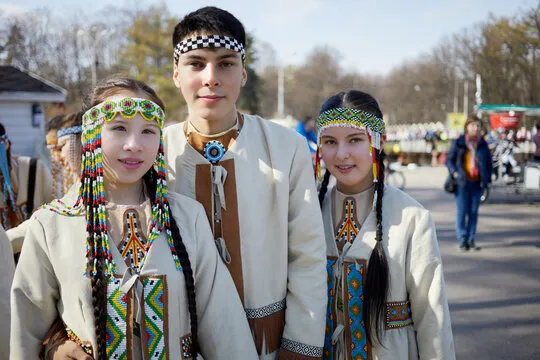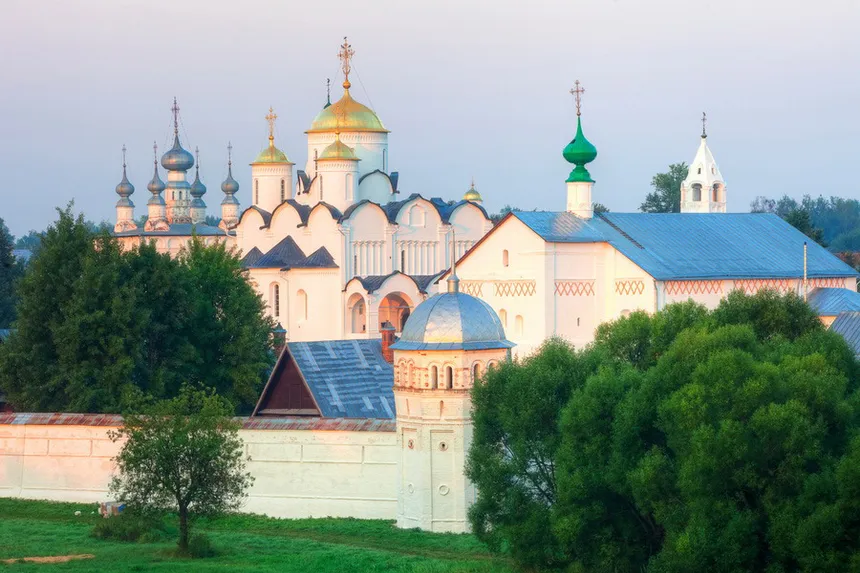
A photo of my grandfather, my father, and I that was taken when I was thirteen years old.

A photo of my grandfather, my father, and I that was taken when I was thirteen years old.
I am from Syracuse. I study in Rochester. I study computers. I listen to metal, rock, and country. I play hockey and I play the guitar. I love to hunt and fish. I have a sister, she is a student. I like to read books. I am an Eagle Scout. I know how to poorly weld. I know how to sail. I played the French horn for seven years. I don't like hot weather. I want to be a pilot. I am Catholic. My confirmation name is Saint George. My family has a dog. I love to go hiking and I have visited Yellowstone national park and Glacier national park. I have visited France, Switzerland, and Italy.
Я из Сиракуз. Я учусь в Рочестере. Я изучаю компьютеры. Я слушаю металл, рок и кантри. Я играю в хоккей и я играю на гитаре. Я люблю охотиться и рыбачить. У меня есть сестра, она студентка. Я люблю читать книги. Я скаут-разведчик. Я умею плохо сваривать. Я умею ходить под парусом. Я играл на валторне семь лет. Мне не нравится жаркая погода. Я хочу стать пилотом. Я католик. Мое конфирмация имя Сент-Джордж. У меня есть собака. Я люблю ходить в походы и я посетил в национальном парке Глейшер и я посетил Йеллоустонском национальном парке. Я побывал в Франции, Швейцарии и Италии.
This is not actually a Russian song, but a Ukrainian song: "Furrows of Gods" by Drudkh. I figured it would not be an issue though. I have liked this song for a very long time but I have never looked up the translated lyrics until now.
The lyrics seem to discuss the concepts of time, eternity, and mentions fields, meadows, and ancestors. I think those are allegories for something, although I’m not sure. It could be the pondering of what one will amount to in life, or how everyone only has so much time left. Drudkh is a Ukrainian black metal band, and their songs often reference Slavic paganism and poetry. This song is specifically an atmospheric black metal track, which focuses on very raw guitar tone and the repetition of adjacent and simple riffs. It doesn’t have that many lyrics considering the song is eight minutes long. Like most other black metal songs, the lyrics are conveyed through distorted screams. Great band.

The Yakuts are an indigenous Turkic ethnic group primarily inhabiting the Sakha Republic (also called Yakutia) in northern Russia; Siberia. Known for their resilience in harsh Arctic conditions, the Yakuts traditionally practice pastoralism, hunting, and fishing. Their cultural identity is marked by traditional shamanism, with reverence for nature and spiritual practices deeply rooted in their daily lives. The Yakut language, a member of the Siberian branch of the Turkic language family, plays a crucial role in preserving their heritage. Despite modernization, Yakuts maintain their traditions, like the summer solstice festival, Ysyakh, which celebrates unity and renewal. Their unique cultural heritage and adaptation to extreme climates highlight their enduring presence and contribution to Russia's diverse ethnic landscape. A very fascinating people.
They eat very well. They drink kumis, which to me seems very similar to kefir. They consume a lot of dairy products from cows and reindeers. They eat lots of fish, venison, and butter.
Interestingly, 3.5% of Yakuts have Y-Haplogroup R1A, which I also share. This means that a significant percentage of Yakuts and I share a paternal ancestor from 25,000 years ago.

Suzdal, a relatively small but historic city of Russia, is located northeast of Moscow. Suzdal transports visitors to a rustic era with its well-preserved medieval structures, including stunning white-stone churches adorned with colorful frescoes and iconic onion domes. The Nativity Cathedral, dating back to the 12th century, stands as a masterpiece of Russian Orthodox architecture, reflecting Suzdal's rich cultural heritage.
Beyond its religious landmarks, Suzdal has excellent landscapes of rolling hills, meandering rivers, and plenty of grassy meadows. The town's tranquil atmosphere and absence of modern development enhance its appeal as a haven of serenity and historical authenticity. It is popular for tourists to visit the open-air Museum of Wooden Architecture and Peasant Life, offering insights into traditional Russian rural culture.
Suzdal's designation as a UNESCO World Heritage site highlights its importance as a window to Russia's past, inviting travelers to immerse themselves in its traditional history and architectural and natural beauty. This is because the town resisted the industrialization of the Soviet Union, and preserved nearly all of its historical style. It’s a very beautiful town, I would love to visit there someday.